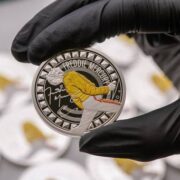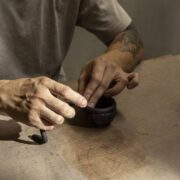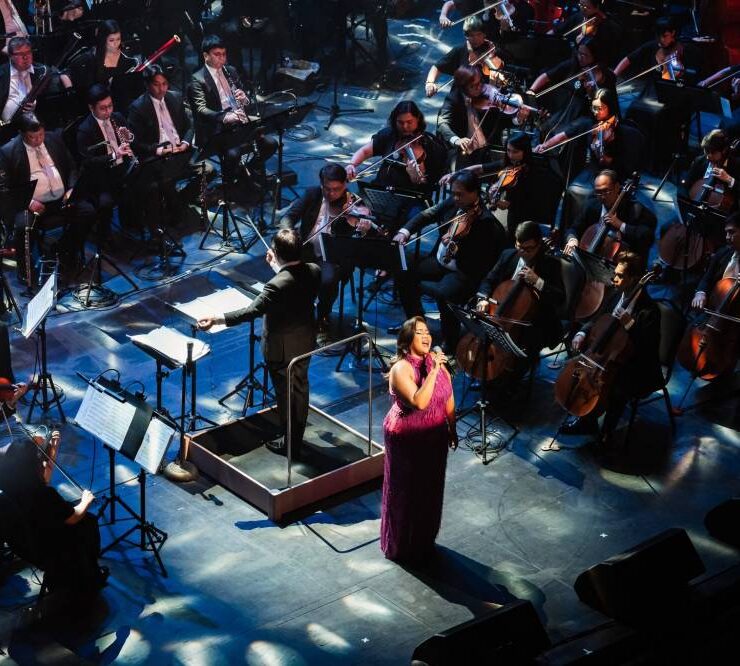A Pasig River Visita Iglesia
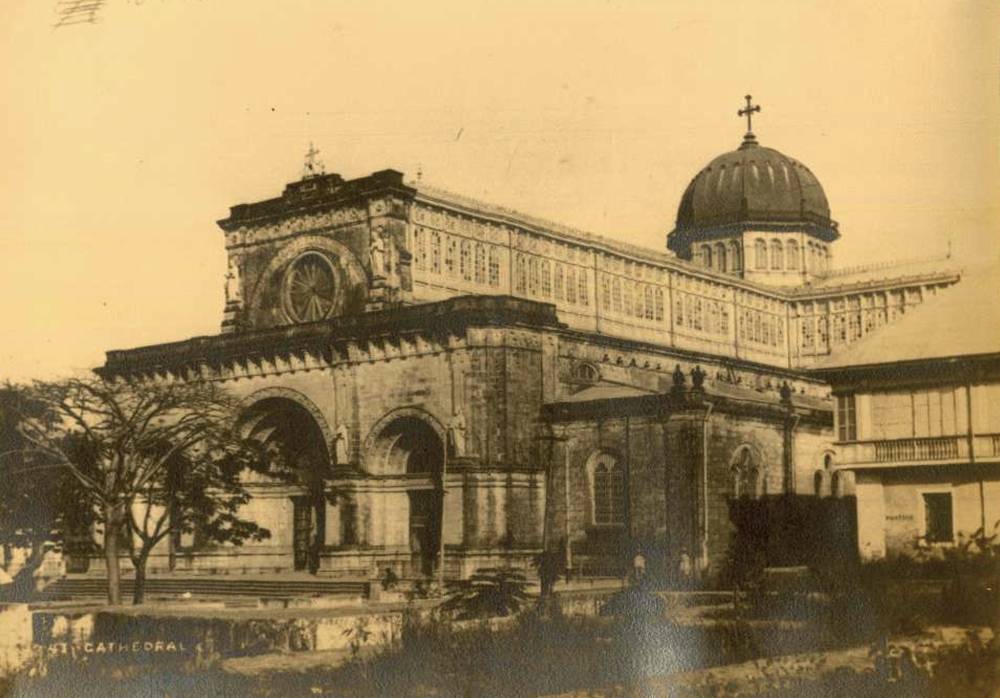
Snaking through several Metro Manila cities as well as the municipality of Pateros and Rizal province’s Taytay town, the Pasig River has played an important role in the development of the metro and neighboring areas.
It is also a vital link between the Laguna de Bay region and Manila Bay, and a significant natural and cultural landmark.
The river’s riparian settlements later evolved into major towns, with the river involved in the social, economic, and religious activities of its residents. It has hosted countless religious fluvial processions in the past, passing through various communities with many churches in sight.
Some of these churches were the subjects of a recent Renacimiento Manila-organized bike tour called “Bisikleta Iglesia: A Historic Pasig River Churches Tour,” done in the context of the annual Visita Iglesia.
The tour started at the Minor Basilica and Metropolitan Cathedral of the Immaculate Conception, popularly know as the Manila Cathedral in Intramuros, and ended at the Saints Peter and Paul Church in Poblacion, Makati.
Manila
Many of Manila’s churches were built inside Intramuros, the old political and religious center of the Philippines, but only few survive to this day: Manila Cathedral, San Agustin Church, and the reconstructed San Ignacio Church complex which now hosts the Centro de Turismo and Museo de Intramuros.
The Manila Cathedral is known as the mother of all churches in the Philippines, as it was originally the seat of Catholicism and the first cathedral, declared as such in 1581.
San Agustin Church is the oldest stone church in the country, completed in 1607, while the San Ignacio Church, built from 1878 to 1880s and ruined during World War II, was an artistic masterpiece with its coffered ceiling, colonnades, and retablo by master carver Isabelo Tampinco.
The other churches and religious buildings that used to stand in Intramuros, but were destroyed by World War II, included the San Francisco Church and its neighbor, the Venerable Tercera Orden Church, the church of the Augustinian Recollects of the Capuchins dedicated to the Our Lady of Lourdes, and the Santo Domingo Church of the Dominicans.
Long-lost is the church of the Parian, a Chinese enclave outside of Intramuros, now the areas of Plaza Bonifacio (also called Plaza Lawton), Arroceros Forest Park, and Mehan Gardens.
Outside Intramuros, other churches located near the Pasig River are those of Santa Cruz, Quiapo, San Miguel, Pandacan, and Santa Ana.
Damaged during World War II and reconstructed in 1957, the church of Santa Cruz (recently elevated to minor basilica by Pope Francis) was where the statue of the Nuestra Señora del Pilar was canonically erected in 1743. Its courtyard witnessed the formal turnover of Manila back to Spain by the British after its occupation that started in 1762.
Popular due to the fervent devotion to the Black Nazarene, the present church of Quiapo was built from 1879 to 1889. It was badly damaged by fire on October 30, 1929, reconstructed from 1933 to 1935 using plans drafted by Juan Nakpil, and enlarged in 1984 by Jose Maria Zaragoza, now both National Artists for Architecture.
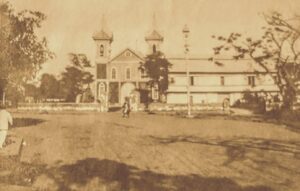
The district of San Miguel church is dedicated to the said saint. It was first built in 1835, was badly damaged by the 1880 earthquake, reconstructed thereafter, and rebuilt in 1913 following the imprint of the old structure it replaced.
That of Pandacan was first built from 1732 to 1760 by the Franciscans and damaged by the earthquakes of 1852 and 1937, reconstructed in the 1970s, destroyed by fire (along with the 17th-century image of the Sto Niño de Pandacan) in 2020, and is currently undergoing reconstruction.
Ancient burial ground
Santa Ana’s church is additionally important since, apart from being the first mission in Manila established outside Intramuros, it was built on a mound which is an archaeologically-rich ancient burial ground.
The present church was built in the 18th century, left damaged by the war, and restored in 1977 by Juan Nakpil with engineer Arturo Mañalac.
The church houses the old image of the Nuestra Señora de los Desamparados which can be accessed through its camarin adorned with a beautifully painted ceiling.
Near this church used to stand the Jesuit compound called La Ignaciana, with a chapel dating back to the American period. The site is now occupied by a high-rise condominium building.
Other notable places of worship located along the Pasig River in Manila are the church of San Vicente de Paul on San Marcelino Street and the chapel of the Hospicio de San Jose on Isla de Convalecencia.
The San Vicente de Paul church was built in 1912. It replaced an earlier chapel built on site in 1883, which served as Paco’s parish church from 1898 to 1909.
Dating back to the Spanish period, the chapel of the historic hospice is cruciform in plan, with a simple façade pierced by a rose window on top of the main portal. It used to have a fine retablo and a beautiful pulpit located on its epistle side.
Mandaluyong
In Mandaluyong, a city founded in 1863, the cornerstone of its church dedicated to San Felipe Neri and originally dedicated to the Immaculate Conception was blessed in 1870. The city’s present church, with a cruciform plan, was built by the Franciscans in the 1880s.
Not far from the church is the Catholic cemetery, possibly octagonal-shaped originally, built on land purchased from the Augustinians. Fr. Miguel Lucio, parish priest from 1872 to 1877, was the one who purchased the land and built its adobe perimeter wall and mortuary chapel.
Makati
In Makati, the Jesuits, through Fr. Pedro de los Montes, built a church dedicated to Saints Peter and Paul in 1620. The church, which used to have its cemetery in front, also had a separate stout belfry located to its right.
It has a nice retablo, and 10 years ago, the ceiling was painted to perhaps give it a more solemn feel. The church has a popular devotion to the Nuestra Señora de la Rosa.
In what is now Guadalupe Viejo, the Augustinians built the 17th century Guadalupe Church and Monastery, located on a promontory facing the P asig River. A donation from the then Diocese of Cebu helped in its completion in 1630.
The church, dedicated to Nuestra Señora de Guadalupe, with San Nicolas Tolentino as a secondary patron, became the headquarters of the British forces in 1762, an orphanage from 1882 to 1885, and a school for the arts and trades in 1885.
From 1898 to 1899, it was occupied by the troops of Emilio Aguinaldo, while during the Filipino-American War it was occupied by the Americans, followed by the Japanese during World War II.
The church has undergone various repairs and reconstructions throughout its almost 400-year existence, with the last in 1970. Interestingly, its convent was demolished after the war and the stones reused in the reconstruction of the Manila Cathedral.
The walls of the church interior bear marks of vandalism from at least 50 years ago, making these part and parcel of the structure’s historical fabric.
The church used to be accessed from the river through a flight of stairs.
Another church in Makati that is close to the Pasig River is the modern church of the Holy Cross in Barangay Tejeros, which started as a chapel of light materials in 1882.
Taguig
Connected to the Guadalupe Church is the Ermita de San Nicolas Tolentino in West Rembo, Taguig (formerly Makati).
The chapel located on J.P. Rizal Extension and built in the late 17th century was the site of religious celebrations from the 1600s to 1800s of the Chinese of Binondo and San Nicolas districts in Manila who honored San Nicolas, after the saint was said to have saved a Chinese infidel from a cayman one day while on board his boat on the river.
But following rowdy celebrations, the Archdiocese of Manila later decided to transfer the festivities to the Guadalupe Church.
In ruins for a long time, the chapel was restored in the early 1990s with architects Cristina Turalba and Ramon Zaragoza at the helm.
Author’s note: The images are from the late 19th to early 20th centuries.










